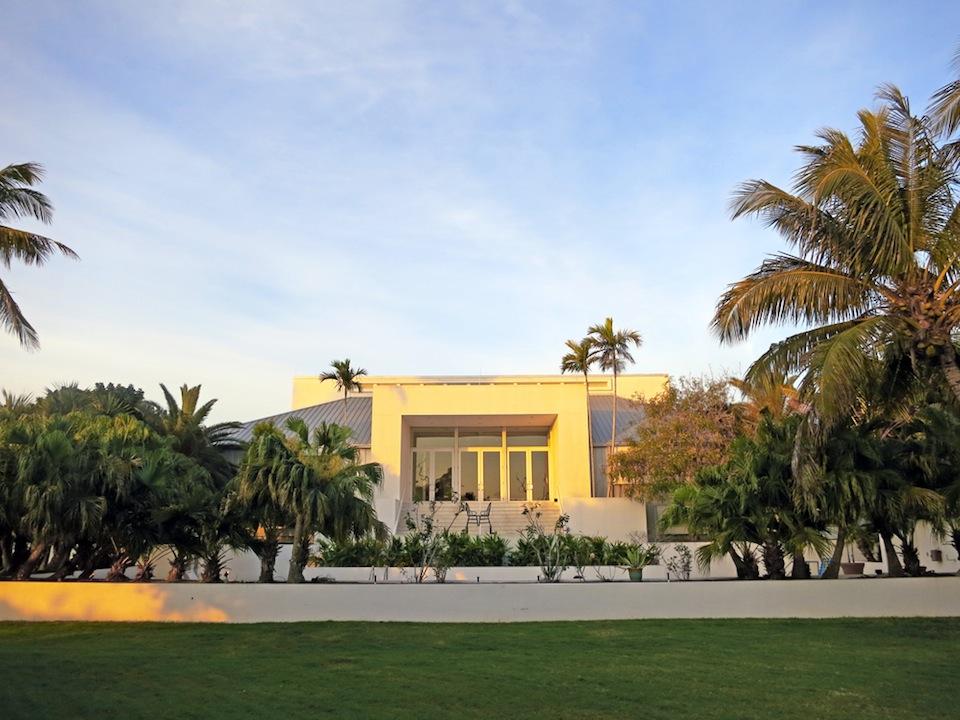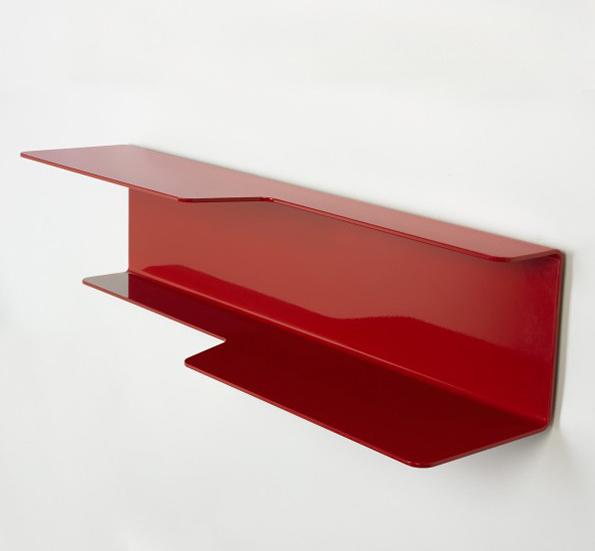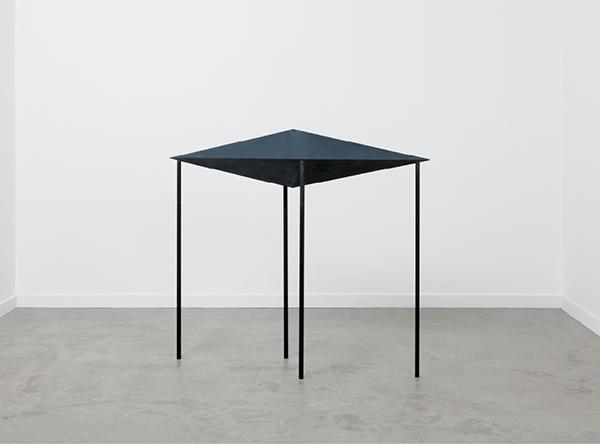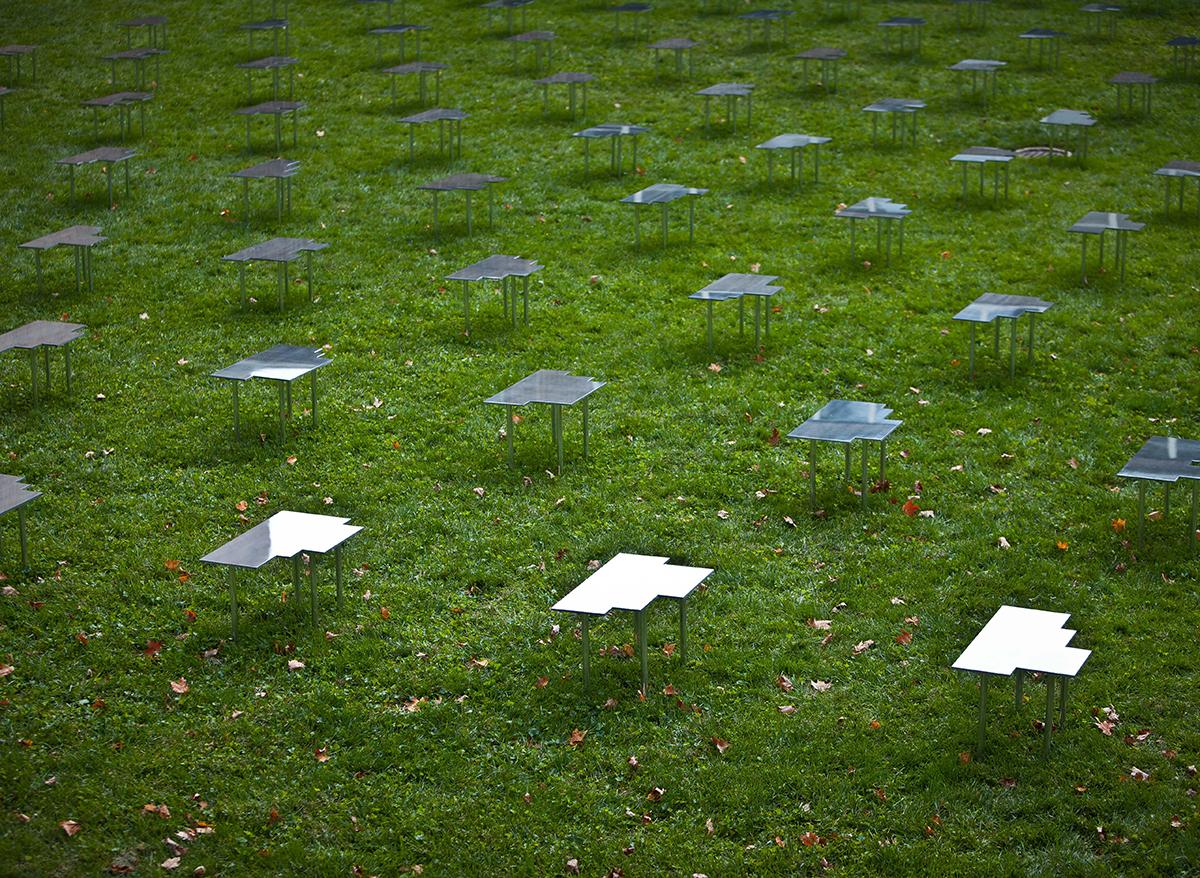
10.14.14
Q+A
Jonathan Nesci in Conversation With Matt Olson of RO/LU
PHOTOS BY JEFF BOND
When it comes to design, it’s easy to forget about Indiana. Easy, but unfair — just ask anyone familiar with the legacy of Columbus natives Irwin and Xenia Miller, whose Eero Saarinen house is one of many architectural landmarks the pair commissioned in and around their hometown. Or ask the editors of Sight Unseen, who included not one but two Indiana-based talents in our American Design Hot List last week. One of them, Jonathan Nesci, debuted a project over the weekend that underscored both arguments: Invited by curator Christopher West to create a site-specific installation on the grounds of Eliel Saarinen’s First Christian Church — also a Miller commission — Nesci conceived the stunning project 100 Variations, consisting of 100 unique, mirror-polished tables aligned in a grid in the church’s courtyard. He developed the tables using the Golden Ratio, an ongoing preoccupation in his work that similarly informed Saarinen’s. We snagged the first photos of the installation, which was on view for only three days, then invited Matt Olson of the Minneapolis studio RO/LU to discuss the project — and its oft-overlooked setting — with Nesci. Read their conversation below.
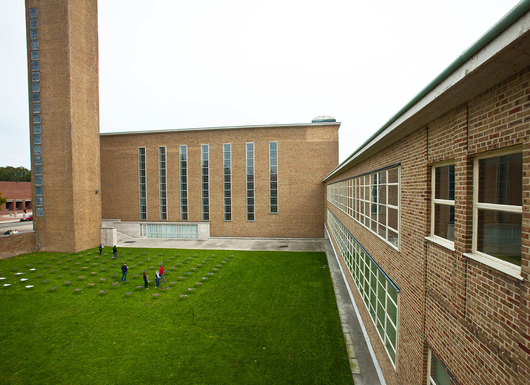 Matt Olson: Tell me about the legacy of Columbus, IN, the Cummins connection, the Millers, etc? It’s such a fascinating history and it’s exciting to see it being explored.
Matt Olson: Tell me about the legacy of Columbus, IN, the Cummins connection, the Millers, etc? It’s such a fascinating history and it’s exciting to see it being explored.
Jonathan Nesci: The legacy is actually really interesting, as you can imagine. The history of the modern architecture here starts with the Millers and more specifically, with First Christian Church by Eliel Saarinen. First Christian Church was the start, and now there are nearly 80 architecturally significant works, with seven of them being National Historic Landmarks. The church, and more importantly the idea, are the genesis of a public/private building partnership that I don’t think exists anywhere else, and it continues to this day.
MO: What’s your connection to the town?
JN: As a fan of architecture and building in general, like many people I just kind of ended up here. A few years ago a friend and I spent the afternoon here and I’ve been coming back ever since. I feel like the town has many layers, and with each experience, I get a bit more insight into how special it really is. Yes, it’s the buildings, but I’m from Chicago and have seen good buildings. For me it’s more about the legacy of the Miller family and how one family directly changed the trajectory of an entire city, a city completely altered with the building of a church in 1942. It’s compelling on many levels. When Christopher West and the people at the biennial approached me with the opportunity to be a part of that, I was honored and excited!
MO: I’m always a sucker for romanticized ideas about systems as solutions — manifestos and wild, sweeping proclamations that give the illusion that there’s actually an answer, or that knowledge can be concrete. That perfection exists. Absolutes. You know what I mean? Maybe I’d be a good candidate to join a cult, ha. At the same time, that’s not at all how I view the world or our work. I believe we make things and then they take over, live their own life, and ultimately teach us what we can’t learn without them. Could you talk about the Golden Variation some? It feels like it could be ripe for romanticizing.
JN: Totally. Utopia! I’ve always been interested in similar ideas, and like you, my work is not directly indicative of or a result of that type of thinking. With the Golden Variation I’ve been really interested in the idea of manifested order. Whether it be a building, a city plan, or a table, the idea of mathematics informing and forming our built environment interests me a great deal. I’ve always liked the work of Allan McCollum and feel like the tables shown in Columbus are individual expressions of a broader idea — pieces of a whole.
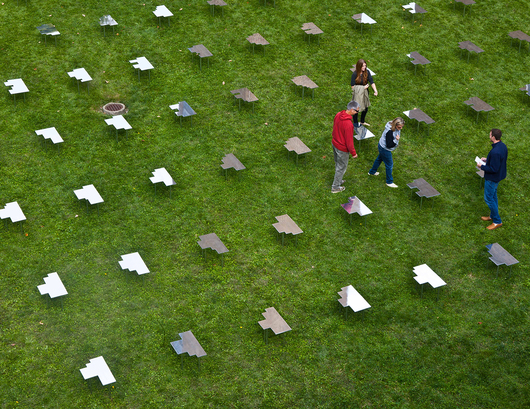
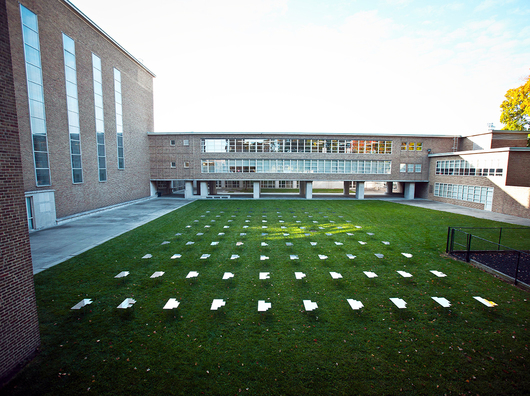 MO: When we spoke on the phone we were talking about objects teaching us, about being surprised, and I was explaining my desire to stay out of my own way and let spaces and situations lead me. The act of surrender to the wave that a surfer gives in to. You told me about surprising echoes from the past emerging in your work, and it made me think about the past as a reflection… Something that feels like a fact but isn’t really there.
MO: When we spoke on the phone we were talking about objects teaching us, about being surprised, and I was explaining my desire to stay out of my own way and let spaces and situations lead me. The act of surrender to the wave that a surfer gives in to. You told me about surprising echoes from the past emerging in your work, and it made me think about the past as a reflection… Something that feels like a fact but isn’t really there.
JN: I feel like I learn so much more from physical objects than from spoken or read information. The visual information activates me and stays with me. Things made in the past are extremely powerful as they tell a story, and it’s our responsibility to do our best to pull the story out and retell it. The best part of this entire story to me was that the show was fully designed before two important, poetic things were revealed to me. The sunken courthouse lawn was once a reflecting pool for nearly 15 years before being filled in because of maintenance issues (1942-1957). A local architect named Louis Joyner showed me early renderings that Charles Eames did of the clock tower being reflected in the pool while he and Eero helped Eliel with details of the church after the show was designed. What a gift of information that really tied the story together!
Another insight that came via research was discovering the Golden Ratio grid that Eliel used in planning the space, which is in the DNA of all 100 of my tables. When you walk around the church you can see these motifs that look so similar to my shapes. My questions are did the story begin to unfold in my subconscious over 5 years ago, when I saw the church for the first time? With each level of research more of it gets unfolded. I believe that time works these things out and you have to be open to new and unexpected directions.
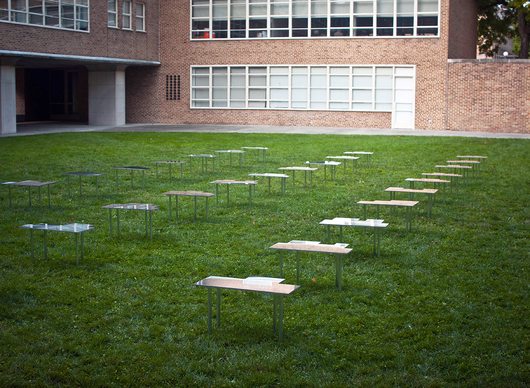
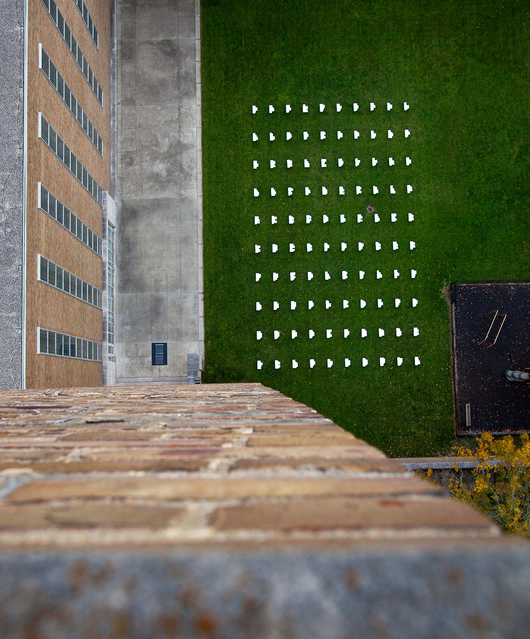 JN: With this project being my first outdoor site-specific project, I was thinking about your landscape work — it’s all site-specific designs. Do you approach the work you show in galleries differently from how you approach your landscape work?
JN: With this project being my first outdoor site-specific project, I was thinking about your landscape work — it’s all site-specific designs. Do you approach the work you show in galleries differently from how you approach your landscape work?
MO: Definitely. Partly just for practical reasons. The landscape-related projects have clients who have a budget along with a set of expectations, and aesthetic comfort levels that we can only affect so much. The landscape work also emerges from a really different place in my mind — it’s intended to be affordable and democratic in spirit. That said, it’s still all connected. For me everything is. It feels interesting to be extremely earthbound in some projects (landscape) and in others, searching for what feels like a loss of limits, trying to push into places we don’t understand. The work with objects, situations, and concepts is much more mysterious and, thankfully, there’s always something inside it that’s smarter than me. I’m working on three book-related projects right now and my parameters are being stretched again. But I guess a book is a site-specific work in a way? The thing I’m most excited about with any work is the notion that it’s living a life and is becoming something — everything is always changing all of the time. It’s easy to see that in action with nature and plants that are growing and dying. The landscape is a great teacher.
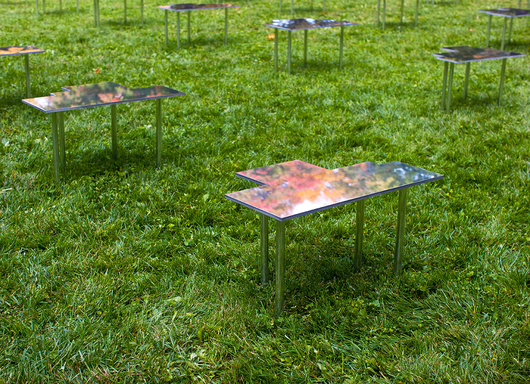
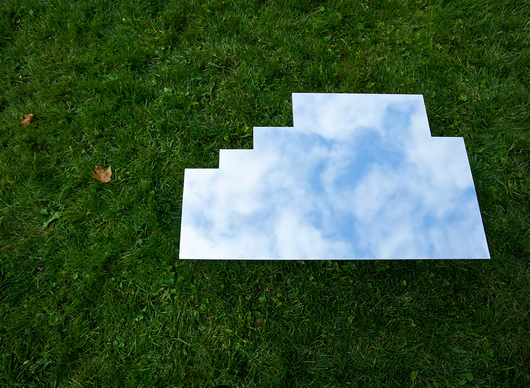 MO: What about reflections? I love the reflective nature of these pieces. As you know, I’m a huge fan of your work but, wow, I was really struck by this project. I love the notion of an object showing you something you aren’t looking at directly.
MO: What about reflections? I love the reflective nature of these pieces. As you know, I’m a huge fan of your work but, wow, I was really struck by this project. I love the notion of an object showing you something you aren’t looking at directly.
JN: Thanks Matt! Likewise. Yes, it’s kind of primal, right? Being drawn to reflective, shiny things. Speaking in broad terms, I feel like my work has always been and continues to be materials-focused, whether it’s a pristine mirror-polish in the case of this work or the more organic, natural finish of my production pieces. As I noted earlier, during my research, a local architect mentioned that there used to be a reflecting pool on the site of my installation. The idea of restoring, albeit temporarily, some of the kinds of reflected views of the church that would have occurred originally is really exciting for me. This allowed me to be able to view the installation as being with the church, and not just at the church.
